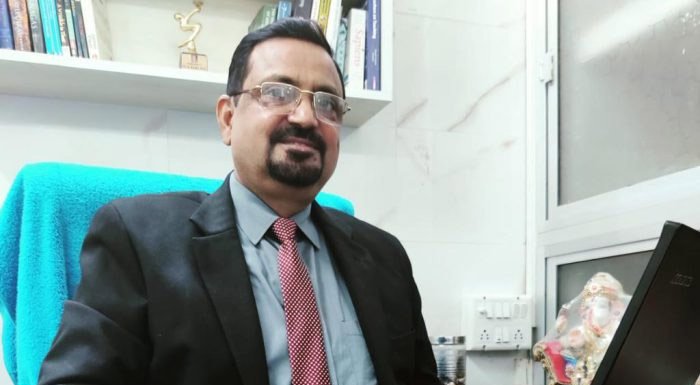By Tanisha Saxena |
From computers to artificial intelligence and robots—we have come so far. Undoubtedly, technology has seeped into our lives fully. It has improved our lives. There’s hardly any aspect that is untouched by technology. The education sector being the core component of society is also experiencing the revolution that technology has brought in. We never imagined that one fine day we would be studying from our most comfortable space, i.e., homes. Technology, again, helped us pave the way ahead and tackle the problem during the pandemic-induced lockdown. Today, EdTech has become a buzzword. It is creating a huge impact on the education system, all in the welfare. Today, in an interaction with a CMR representative Dr. Atul Srivastava, President of the Association of Private Schools in Uttar Pradesh, talks about the role of technology in the education sector.
Q1. How can technology help improve student engagement in the classroom?
Ans. Technology can help improve student engagement in the classroom by providing students with interactive and engaging learning experiences. Technology can be used to create virtual classrooms, provide access to online resources, and facilitate collaboration between students and teachers. Technology can also be used to create interactive activities and games that can help keep students engaged and motivated.
Additionally, technology can be used to provide personalised learning experiences for students, allowing them to learn at their own pace and in their own way.
Q2. How can technology help teachers better assess student learning?
Ans. Technology can help teachers better assess student learning by providing tools such as online quizzes, automated grading, and real-time feedback. Online quizzes can help teachers quickly assess student understanding of a concept, while automated grading can save time and provide more accurate results. Real-time feedback can help teachers identify areas of improvement and provide personalised guidance to students.
Additionally, technology can provide data-driven insights into student performance, allowing teachers to better tailor instruction to meet individual student needs.
Q3. Blended learning is crucial. According to you, how can educational institutions achieve this equilibrium state?
Ans. I would like to say that we are unique as a nation. We are also extremely proud of our traditional educational system. Of course, with time, we all evolve. But it should never replace our traditional methods. In fact, we need to make a blend of the old and new to create a one-of-a-kind learning experience for our students. When we started using the smart class system in our classrooms, we didn’t replace our teachers. It is important to note that technology can never replace human qualities.
No matter what, we always need humans to drive the forces. So, we need to achieve this equilibrium state. I believe that we can achieve it smoothly. Today, we conduct online classes but at the same time, the students are given offline classes as well. It is divided into a structure like days-wise.
Q4. Teachers training and capacity building is a milestones we are yet to achieve. What steps should be taken in order to facilitate the same?
Ans. First and foremost, establishing a comprehensive teacher training program is crucial. Develop a comprehensive teacher training program that includes both theoretical and practical components. This should include topics such as classroom management, lesson planning, assessment, and curriculum development. Secondly, provide adequate resources.
It is important to help teachers with the necessary resources to guide them to become more effective educators. This could include access to technology, textbooks, and other materials. Next comes collaboration, which is to basically keep encouraging the teachers to collaborate with each other and share best practices.
Q5. With technology in place, the digital divide is also quite evident. How are we actually tackling this?
Ans. A digital divide is in place, indeed. We acknowledge this fact as well. However, we as a nation are constantly working towards it. In many states, the state government is trying their best to provide all the resources possible to the students. In Uttar Pradesh, the state government has always been vocal about providing adequate means to support the kids in education. From books and uniforms to laptops and smartphones—we have always received immense support.
I would say that the population of our country is a major factor due to which we are not able to address poverty, especially in the rural belt. But we are gradually reaching there as well. There’s a way to achieve a task. First, we need to address the basic problems and then the availability of digital resources. I am sure we will soon be reaching an equilibrium state.
Q6. What are the challenges of implementing technology in education in India? What about the rural population to the cutting edge technology?
Ans. Right from accessibility to technology in education to affordability and lack of infrastructure—everything becomes chaotic. The need of the hour is to create harmony in all these. As I said earlier, in rural areas the poverty is high and as a result schools and colleges don’t have the means to buy technological stuff. Smart classes for example need better infrastructure of the schools and colleges in the first place. Then comes the educator-learner adaptability issue.
In rural areas, the teachers don’t get proper training, or they have to move to bigger/urban areas to get trained. However we do have seminars and workshops in place at regular intervals in the year to help teachers gain insight into the technical aspects.
Q7. With the growing market for EdTech, malpractices to attract consumers is increasing day by day. What solutions or steps can be taken to prevent it?
Ans. First, establishing a regulatory body or organisation to monitor the EdTech industry might help us. Secondly, increasing transparency is crucial. The EdTech companies need to provide detailed insight into the system, products, services, cost, reviews, etc. We need to be fully aware of what we are buying.
Q8. Why is India lagging behind in terms of using technology in education? If we look at China and the US or any other country for that matter, they have successfully infused technology in education there. Do you think that besides lack of infrastructure, we also don’t have entrepreneurs like Elon Musk or Jeff Bezos?
Ans. Here, I would like to say that we need not compare our education system with other countries. What we have might not be available there, and vice versa. India is not lagging behind but climbing up the ladder gradually. The steps are small yet impactful. We must not forget that we have illiteracy and poverty to address first.
Talking about the lack of entrepreneurs like Musk and Bezos, No. We don’t have a dearth of entrepreneurs and creative minds here. It is because we are unaware of how to utilise the manpower that we are slowly taking these steps.









